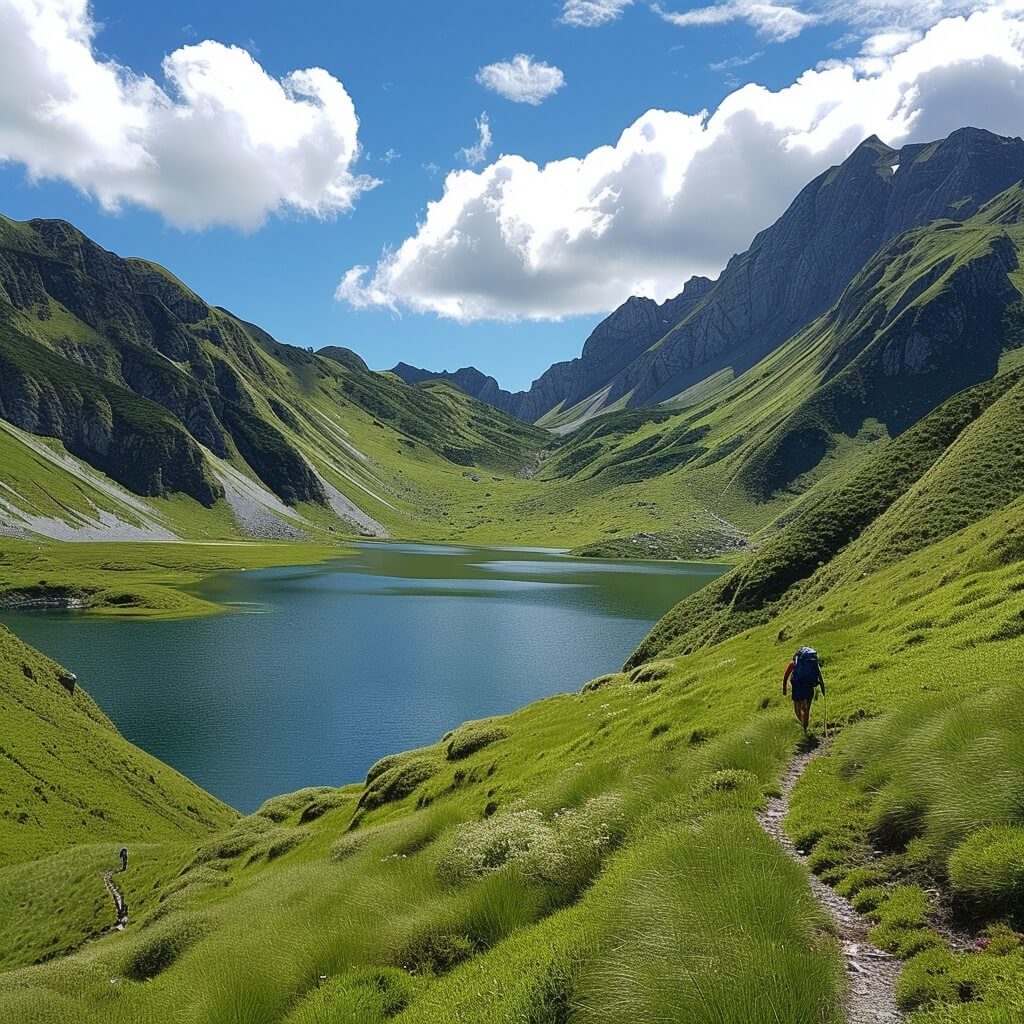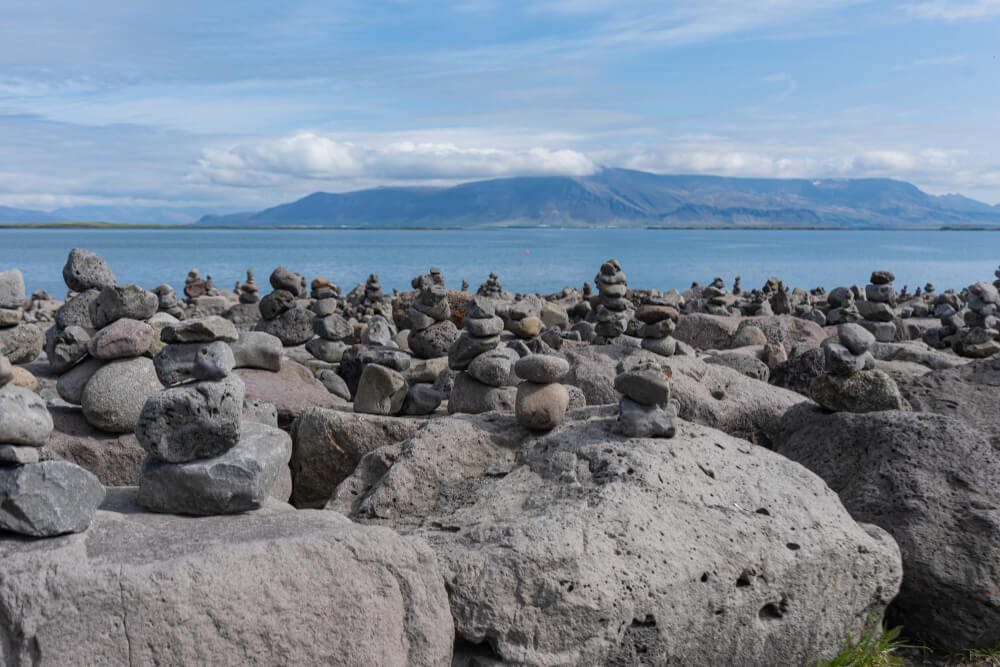The Tongariro Alpine Crossing, often touted as one of the best day hikes in the world, promises an unforgettable adventure through a diverse landscape of active volcanoes, emerald lakes, and ancient lava flows.
However, this 19.4-kilometer trek across New Zealand’s volcanic terrain is no walk in the park.
Proper preparation and safety measures are crucial to ensure you have a safe and enjoyable experience.
In this comprehensive guide, we’ll cover everything you need to know about hiking the Tongariro Crossing.
From common questions and concerns to essential gear, safety tips, and ways to enhance your adventure, we’ve got you covered.

Common Questions and Concerns
How difficult is the Tongariro Crossing?
The hike is challenging, with steep climbs and descents, varying weather conditions, and a duration of 7-9 hours. It requires a good level of fitness and preparation.
What is the best time of year to hike?
The best time to hike is during New Zealand’s summer months, from November to April. During this period, the weather is more stable, and the days are longer.
However, be prepared for all weather conditions year-round.
Do I need a guide?
While the trail is well-marked and many people hike it independently, hiring a guide can enhance your experience, especially if you’re unfamiliar with alpine conditions.
What if the weather changes suddenly?
Weather can change rapidly in the mountains. It’s essential to check the forecast before you go and be prepared for all conditions, including rain, wind, and even snow, regardless of the season.
Is it safe to hike alone?
Many hikers do the Tongariro Crossing alone, but it’s always safer to hike with a companion. If you choose to hike alone, make sure someone knows your plans and expected return time.
Understanding the Terrain
The Tongariro Alpine Crossing traverses an extraordinary landscape formed by volcanic activity.
Here’s a breakdown of what to expect:
Mangatepopo Valley to Soda Springs
- Distance: 4 kilometers
- Elevation: 1100 meters to 1400 meters
- Terrain: Gentle incline through a valley with volcanic rocks and alpine plants
Soda Springs to South Crater
- Distance: 2 kilometers
- Elevation: 1400 meters to 1600 meters
- Terrain: Steep climb known as the ‘Devil’s Staircase,’ challenging but with rewarding views
South Crater to Red Crater
- Distance: 2 kilometers
- Elevation: 1600 meters to 1886 meters
- Terrain: Flat crater floor followed by a steep climb, with loose volcanic rock
Red Crater to Blue Lake
- Distance: 1 kilometer
- Elevation: 1886 meters to 1750 meters
- Terrain: Steep descent with stunning views of the Emerald Lakes
Blue Lake to Ketetahi Hut
- Distance: 3 kilometers
- Elevation: 1750 meters to 1400 meters
- Terrain: Gradual descent past the Blue Lake and through alpine meadows
Ketetahi Hut to Ketetahi Road End
- Distance: 7 kilometers
- Elevation: 1400 meters to 800 meters
- Terrain: Long descent through native forest with views of Lake Rotoaira and Mt. Pihanga
Essential Gear for Your Journey
Packing the right gear can make a significant difference in your hiking experience.
Here’s a comprehensive list of essentials:
Footwear
- Hiking Boots: Choose sturdy, broken-in hiking boots with good ankle support and traction.
Clothing
- Base Layer: Moisture-wicking fabric to keep you dry.
- Mid Layer: Insulating layer like fleece for warmth.
- Outer Layer: Waterproof and windproof jacket and pants.
- Hat and Gloves: Protect against sun and cold.
- Extra Socks: In case your feet get wet.
Backpack Essentials
- Water: At least 2-3 liters. There are no water sources on the trail.
- Food: High-energy snacks like nuts, dried fruits, energy bars, and a packed lunch.
- First Aid Kit: Include band-aids, antiseptic, painkillers, and any personal medications.
- Navigation: Map, compass, and a fully charged mobile phone. Consider a GPS device.
- Emergency Gear: Whistle, multi-tool, and a thermal blanket.
Sun Protection
- Sunscreen: SPF 30 or higher.
- Hat and Sunglasses: To protect against UV rays.
Extras
- Headlamp: In case you end up hiking in low light conditions.
- Trekking Poles: Helpful for stability on uneven terrain.
- Camera: To capture the breathtaking scenery.
Detailed Safety Tips
Safety is paramount when undertaking the Tongariro Crossing.
Here are some detailed tips to ensure your hike is safe:
Stay on the Marked Trail
- Venturing off the trail can lead to dangerous areas and disturb the fragile environment. Stick to the path to avoid getting lost and to protect the natural habitat.
Monitor Weather Conditions
- Check the weather forecast multiple times leading up to your hike. Be prepared for sudden changes, and don’t hesitate to turn back if conditions become unsafe.
Hydration and Nutrition
- Dehydration can be a serious issue. Drink water regularly, even if you don’t feel thirsty. Eat energy-boosting snacks throughout the hike to maintain your stamina.
Pace Yourself
- Don’t rush. Take breaks as needed and listen to your body. It’s a marathon, not a sprint.
Group Safety
- Stick with your group and keep an eye on each other. Make a plan for what to do if someone gets separated.
Emergency Preparedness
- Know the location of the nearest huts and emergency shelters. In case of an accident or sudden weather change, these can be lifesavers.
Inform Others
- Let someone know your hiking plans, including your start time, expected end time, and your route. This way, if something goes wrong, help can be dispatched.
Respect the Environment
- The Tongariro Crossing is part of a UNESCO World Heritage site. Take all rubbish with you, stick to marked paths, and avoid disturbing wildlife.
Making the Most of Your Experience
Enjoy the Views
- Take your time to soak in the spectacular scenery. Highlights include the Red Crater, Emerald Lakes, and the panoramic views from the summit.
Photography Tips
- Early morning light can create stunning photos, especially at Red Crater and Emerald Lakes. Use a camera or a smartphone with a good camera. Remember to stay safe while capturing your memories—don’t risk your safety for a selfie.

Historical and Cultural Insights
- The Tongariro National Park holds significant cultural importance for the Māori people. Respect any signs and markers indicating sacred sites.
Wildlife Spotting
- Keep an eye out for native birds like the New Zealand pipit and the North Island robin. Remember not to feed the wildlife.
Meet Fellow Hikers
- The Tongariro Crossing is a popular hike, and you’ll likely meet people from all over the world. Sharing experiences and tips can add to the enjoyment of your hike.
Encouraging Reader Interaction
Share Your Experience
- Have you hiked the Tongariro Crossing? Share your story in the comments below! How did you prepare, and what tips do you have for others?
Ask Questions
- Do you have any questions about hiking the Tongariro Crossing? Leave a comment, and we’ll do our best to help.
Social Sharing
- Found this guide helpful? Share it with your friends and family planning to hike the Tongariro Crossing. Use the hashtag #TongariroCrossingAdventure to join the conversation on social media.
Conclusion
Hiking the Tongariro Alpine Crossing is a rewarding challenge that offers breathtaking views and a sense of accomplishment.
Proper preparation, awareness of safety tips, and respect for the environment are essential for a successful hike.
From understanding the terrain and packing the right gear to staying safe and making the most of your experience, this guide provides everything you need for an unforgettable adventure.
Share your thoughts, ask questions, and spread the word to help others prepare for their own Tongariro Crossing journey.
Ready to embark on this adventure? Lace up your boots, pack your bag, and set off on a hike that promises not just spectacular views but memories that will last a lifetime.
Safe travels and happy hiking!
Recent Comments